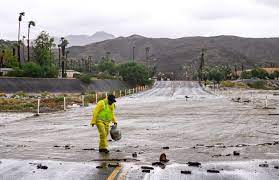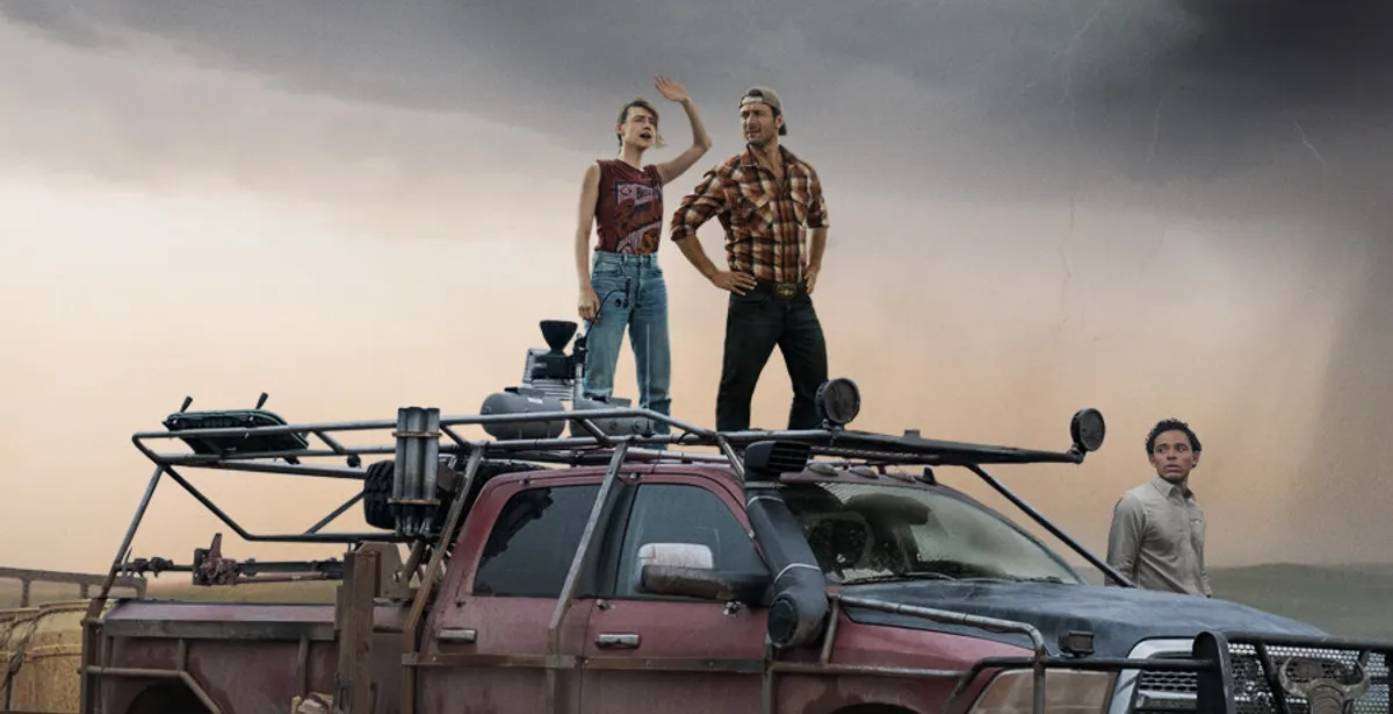Hurricane Hilary destruction latest news | Flooded areas U.S. Southwest | Water rescues Southern California 2023
Hurricane Hilary destruction latest news | Flooded areas U.S. Southwest | Water rescues Southern California
Southern California : The remnants of Hurricane Hilary brought significant impact to the U.S. Southwest, affecting areas from mountains and deserts to Pacific Ocean beaches. The storm was downgraded to a post-tropical cyclone but still led to mudslides, flooding, and water rescues across Southern California.
Rain and Debris Cause Disruption
Heavy rainfall and debris caused road washouts and stranded vehicles in standing water. Los Angeles County experienced nearly 7 inches of rain, while Beverly Hills received almost 5 inches by early Monday.
Impact on Coachella Valley and Surrounding Areas
The Coachella Valley, including Palm Springs, was among the hardest-hit regions. The Palm Springs Police Department reported that 911 lines were down at one point, prompting them to urge residents to text 911 or contact nearby police and fire stations in emergencies. Floodwaters were pumped out of the Eisenhower Medical Center in Rancho Mirage, while Palm Desert dealt with downed trees and flooding.
Officials described the storm as unprecedented for the community and noted ongoing efforts to restore normalcy. Schools, businesses, and offices across the area remained closed due to the potential for life-threatening flooding. Hurricane Hilary destruction latest news

Anticipated Rainfall and Flash Flooding
The National Weather Service warned of continued risk for life-threatening and locally catastrophic flooding in parts of the U.S. Southwest due to the storm. Additional rainfall of 2 to 4 inches was expected in many areas, with isolated regions potentially receiving up to 12 inches in Southern California and Southern Nevada by Monday.
As the storm moved northward, Oregon and Idaho were also forecasted to experience heavy rainfall, with the possibility of significant flash flooding.
Infrastructure Strain in Southern California
Interior regions of Southern California faced potential road and rail closures due to major flooding, washouts, and mudslides, placing strain on infrastructure, according to AccuWeather’s Dan DePodwin.
Rescues and Emergencies in San Diego
In San Diego, rescue teams were active in pulling 13 individuals from a homeless encampment flooded by the San Diego River. San Diego Mayor Todd Gloria declared a state of emergency as the city received a record 1.82 inches of rain in August.
Rainfall Records and Emergency Declarations
Southern Nevada saw record-breaking rainfall, with Bristlecone receiving 6 inches of rain, breaking the state’s record for tropical cyclone or remnant rainfall.
The city of Palm Springs declared an emergency due to the unprecedented rainfall, causing flooding of local roadways and necessitating swift water rescues.
Lake Meade National Recreation Area Affected
The Lake Meade National Recreation Area, situated on the Colorado River in Nevada and Arizona, remained closed due to damage caused by Hilary. Power and utility outages, dock damage, and washed-out roads led to challenges in emergency response and access.
Storm’s Path and Formation
Hilary originated off the west coast of Mexico on August 16, strengthening to a Category 4 hurricane before making landfall as a tropical storm on Mexico’s Baja California Peninsula. The storm moved through Tijuana and became the first tropical storm to cross into California from Mexico since 1997.
Subsequent Tropical Storms
Tropical Storm Franklin was approaching the Dominican Republic, with potential impacts on Puerto Rico. Tropical Storm Emily, located in the Atlantic Ocean, was expected to weaken and lose its status as a tropical storm. Tropical Storm Gert, situated east of the Northern Leeward Islands, was forecasted to dissipate and become a remnant low.
Tips for Staying Safe During a Flooding Storm
Floods can pose significant risks to both life and property. It’s crucial to be prepared and take appropriate measures to ensure your safety during a flooding storm. Here are some essential guidelines to follow:
1. Stay Informed: Monitor Weather Updates Stay informed about weather forecasts and updates from reliable sources. Listen to local news, weather apps, and emergency broadcasts to stay up-to-date with the latest information about the storm and flood conditions.
2. Create an Emergency Kit Prepare an emergency kit with essential items, such as non-perishable food, bottled water, a first aid kit, medications, flashlight, batteries, blankets, and important documents. Keep the kit in a readily accessible place. Hurricane Hilary destruction latest news

3. Plan an Evacuation Route Identify evacuation routes in your area and have a plan in place for how you and your family will evacuate if necessary. Practice the route with your family so everyone knows what to do.
4. Elevate Important Belongings If possible, elevate valuable items and important documents to higher levels in your home. This can help protect them from potential floodwaters.
5. Turn Off Utilities If flooding is imminent, turn off utilities such as gas, electricity, and water to prevent further damage and reduce the risk of accidents.
6. Avoid Walking or Driving Through Floodwaters Never attempt to walk or drive through floodwaters, as they can be deceptively strong and deeper than they appear. Six inches of swiftly moving water can knock you off your feet, and just two feet of water can carry away most vehicles.
7. Move to Higher Ground If you live in an area prone to flooding, move to higher ground if flooding becomes a threat. Avoid staying in basements or ground-level areas during a flood.
8. Heed Evacuation Orders If authorities issue evacuation orders, follow them without delay. Your safety is paramount, and it’s essential to heed the advice of emergency responders.
9. Stay Away from Rivers and Streams Avoid camping or parking near rivers, streams, or creeks during heavy rainfall. These water bodies can quickly overflow and lead to dangerous situations.
10. Be Cautious After the Storm Even after the storm has passed, remain cautious. Floodwaters may recede slowly, and dangers such as weakened structures and debris could still pose risks.
11. Check on Neighbors Check on neighbors, especially the elderly or those with disabilities, to ensure their safety and offer assistance if needed.
12. Stay Calm and Stay Put If you’re caught indoors during a flood, stay calm and stay put. Move to the highest point in your home and wait for rescue if necessary.
13. Teach Children About Flood Safety Educate children about flood safety, including the risks associated with floodwaters and the importance of following evacuation plans.
14. Review Flood Insurance Review your insurance coverage, particularly flood insurance, to ensure you have adequate protection for your property.
15. Communicate and Stay Connected Stay connected with family members and friends to let them know you’re safe. Use social media or messaging apps to communicate if phone lines are down.
Remember, floods can happen unexpectedly and can be extremely dangerous. Being prepared, staying informed, and following the advice of emergency authorities can help you stay safe during a flooding storm.












Post Comment
You must be logged in to post a comment.